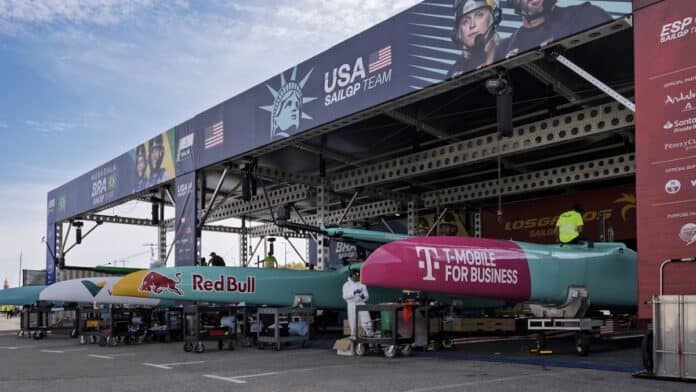The international sailing competition SailGP is to expand to 13 teams in 2026 with a further team set to start in 2027.
The 13th team has been sold to an undisclosed group following a competitive global tender process.
Announcing the plans, SailGP CEO Sir Russell Coutts, explained that the newest F50 – once complete will be used in a long-term training facility.
“I think that’s going to make a big difference to the league going forward, and a fantastic solution for new and existing teams to train their athletes.”
SailGP is also introducing a raft of new updates to its one-design F50 fleet including new rudders and plans for automated foil-protection software for high speed, highly-loaded maneuvers.
These latest innovations are part of SailGP’s broader vision to redefine sailing.
Sir Russell Coutts
The updates follow a cycle of testing and development which began in January 2024.
The new rudders are thinner and have a longer cord length and more efficient elevators than previously and are designed to provide greater control at high speed and better foiling performance at low speeds.
The new high-speed rudders will also raise the threshold for cavitation to 106km/h (66mph) – an increase from the previous onset speed of 83km/h (51mph) on the first-edition rudders.
“In a championship where teams are consistently pushing the boundaries – competing against each other – every improvement must balance performance with safety and precision,” said Sir Russell.
Technological excellence
“These latest innovations are part of SailGP’s broader vision to redefine sailing through technological excellence, athletic drama, speed and performance at the highest levels.”
The new software will provide extra protection for crews when managing the extreme loads experienced during high-speed manoeuvers.
The software will identify when the F50 is sailing in a high-speed, highly-loaded moment, and automatically put an increased positive angle of attack (rake) into the daggerboard (foil) to mitigate the risk of over-loading the boat.
Russell added: “Once fully operational, the new software will be a meaningful step toward safeguarding the fleet in the most demanding scenarios.
“While nothing replaces expert handling, this change will mitigate some risk of overloading the boat, and provide an extra layer of protection for crews and equipment.”ding the boat, and provide an extra layer of protection for crews and equipment.”




